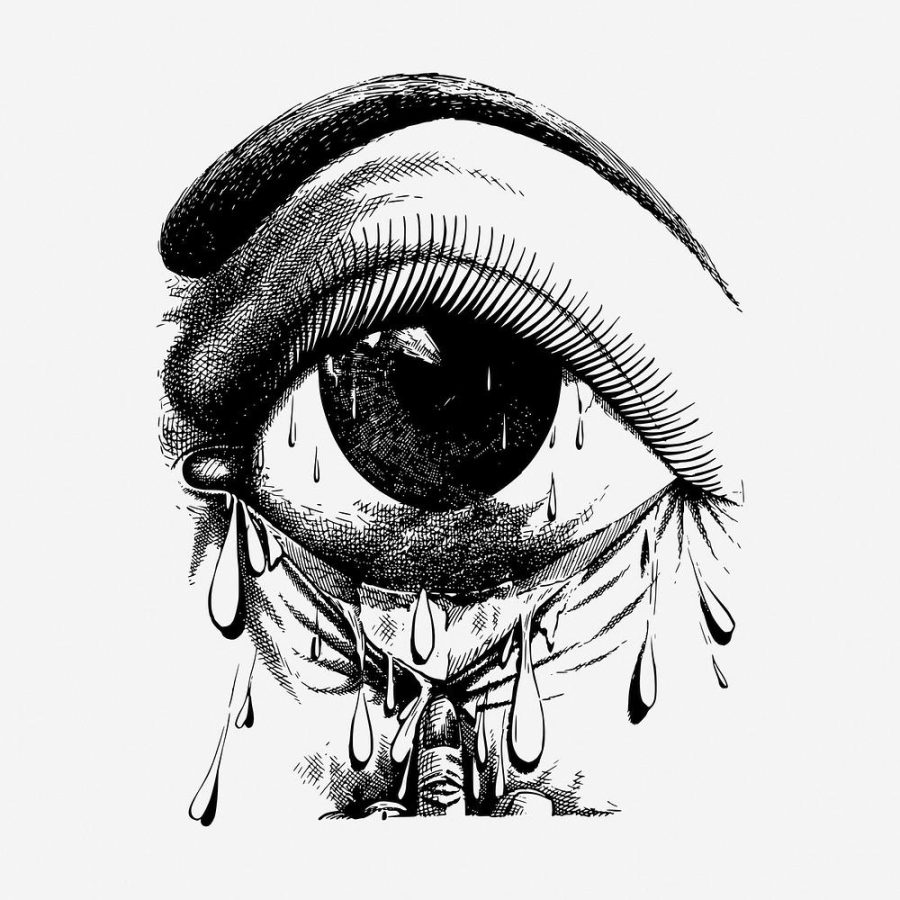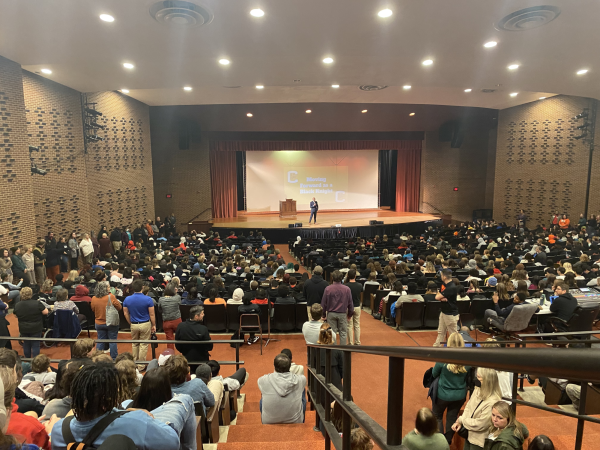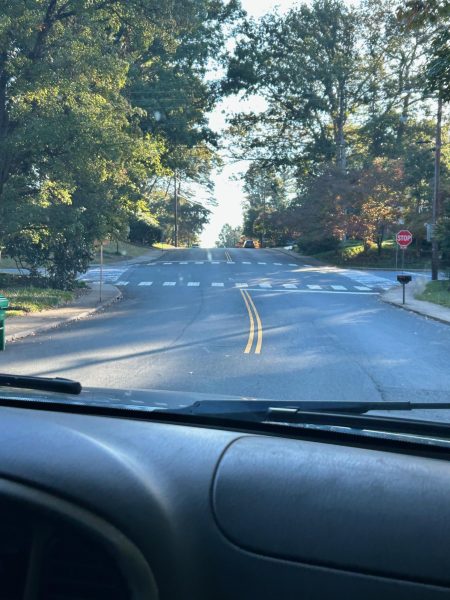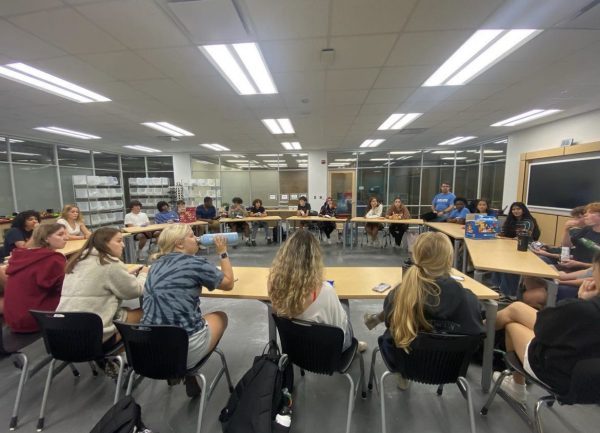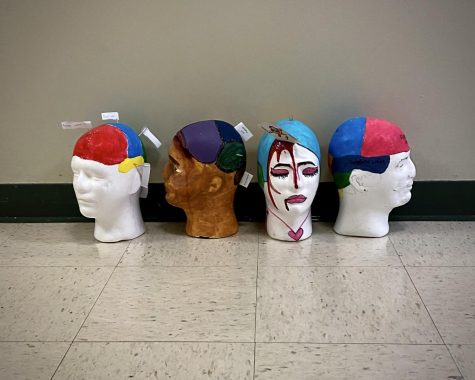Bullying in the Middle Schools: Greater Violence and the Roadblocks to Reform
Photo used under SPLC guidelines.
February 27, 2023
“He was physically unable to go back to school after that. His stomach was sick, he had so much stress and anxiety he could not go to school, and we just found something else immediately because it was not an emotionally healthy situation for him.”
That is the mother of a former Walker student speaking to me about her son’s experience at the school. The violence and fear he experienced essentially forced him out of the school; and what’s worse, this is not a unique story. Middle school students entering Walker Upper Elementary and Buford Middle School often express witnessing violence or bullying of some form, and those with the means to leave the schools often do.
The trauma caused by bullying or violence is intense and can take years of work to recover from. The mother of the Walker student I spoke to told me about a violent classroom fight her child experienced during the first week of school. The principal and teachers performed a sort of “restorative justice” in which the kids were asked to share how the fight made them feel. “But apparently they didn’t”, his mom told me, “and that’s not surprising because that’s a very intimidating thing to open up as a ten year old in front of your peers.”
In order to better understand restorative justice in the middle schools, I interviewed Patrick Farrell and Amanda Korman, the City Schools Intervention Support Supervisor and the Community Relations Liaison. The process of restorative justice is complex and involves participation from teachers, counselors, and administrators. It is still being developed in the middle schools and remains to be an adjustment for everyone involved.
After a week, the same student witnessed a second fight in his classroom. This time it involved a student throwing a chair and what his mother said was “a lot of physical contact that wasn’t appropriate in a lot of ways, and language that was just highly inappropriate for the classroom, and lots of bullying. He just didn’t feel like there was any academic time because it was constantly focused on handling the very real violent threats.”
After the second major fight, the violence subsided and the teacher and principal were transparent about their efforts with restorative justice to heal the classroom. But things became dramatically worse for the student, who was being threatened by his peers.
“Death note, death ____” was written on the whiteboard, and the blank was filled with the student’s name. The teacher’s response to his complaint was to ‘problem solve’, a seemingly dismissive instruction to a student standing up for himself. The next day a friend stole a marker from the student, and the same peer who had threatened him previously told the friend, “Don’t worry, I’ll kill him.”
This was the point when the student’s parents pulled him out of school, because the situation was so unhealthy for him. It became evident that the intensity of the bullying and fear he experienced at school was manifesting in his body, making him too sick to go to school.
“He’s seeing a therapist now who is amazing and I appreciate her wholly. She said this is very traumatic and it takes time, and he has to learn to trust his peers that he’s physically safe and emotionally safe. He has to trust his teachers that he’s safe in that environment,” his mother told me. The student told me that he feels like the only way he could get hurt at this new school is if he were to fall and trip.
Even with a new school and separation from the bullying, adjustment has been slow and hard for this student. The truth is that violence and bullying are traumatic experiences, and fear is not something easy to forget. Recovery takes time, and as the mother of the student emphasizes, children have to be able to trust their classmates and teachers. It is also unfair for the students living in fear without the means to leave the public schools– the student told me that it was sad to see other kids left behind who are also victims of violence and bullying. Why should any student go to school in fear?
I interviewed Patrick Farrell and Amanda Korman, the City Schools Intervention Support Supervisor and the Community Relations Liaison to learn more about restorative justice. They informed me that the process of restorative justice is a proactive response to student conflict. Issues in conflict resolution arise when an act of harm is committed, but because the students perpetrating the harm often have no sense of connection with the student they target, resolution cannot be reached. Therefore, the first step of restorative justice is building a community in which students interact with each other.
Mr. Farrell described that the way this community is developed is through group reliant practices like morning meetings, restorative circles, and classroom circles. This bonding builds a relationship between students and teachers beyond an academic level, teaching students to value each other as more than classmates. “It’s mostly like, let’s talk about this idea of harm before anything happens, so that when the harm does happen we have something to go back to refer to.”
This preemptive practice is important especially considering the lack of proactive work in the public schools’ history. Mr Farrell explained that In the past disciplinary action has been purely focused on a response to harmful student action, rather than attempting to prevent it altogether. Restorative justice practices hold kids accountable for their actions by requiring them to reflect on the harm they have caused and the steps they will take to repair it. The idea is that being held socially accountable for a mistake will be more of a deterrent from negative behavior than the classic disciplinary actions.
A barrier to restorative justice is that students come from all backgrounds, and some students have not been taught the necessary social skills to discuss and repair conflict. While restorative justice seeks to teach these skills, Mr. Farrell told me it does not always work. In cases where a student cannot cooperate with the restorative process, the traditional discipline methods remain in place as a last resort.
I asked Ms. Korman and Mr. Farrell more about bullying at Walker Elementary, and what the process is like for a student who is seeking help. While they did not have a percentage of the middle schoolers that report being bullied, they did describe the steps taken to assess conflict between students. Mr. Farrell defined bullying as a situation in which one student, or group of students, has more power than another and uses that power to cause the student harm. The story of the Walker student above was a case of both violence and bullying. They did share that although they don’t have the percentage of students reporting bullying, they have found that many students who report conflict are only experiencing conflict, not bullying. Mr. Farrell and Ms. Korman explained that the middle schools are currently attempting to increase the number of counselors, social workers, and mental health professionals in the building in order to provide needed support to students. They did admit, however, that many students do not feel comfortable with a school counselor and may have trouble reporting experiences like bullying.
The increase in mental health professionals and teacher training in the City Schools aims to give teachers the ability to identify harm and conflict between students. The ideal goal is for teachers to properly identify and deal with students who are struggling or who have trouble asking for help. It is then the teacher’s job to refer that student to a counselor or similar advisor for further help.
I asked about the specific situation of the student in this article who reported being threatened twice to his teacher, and was directed to ‘problem solve’. What is a student who advocates for themselves supposed to do when they are ignored? Mr. Farrell answered by saying “we must ask if it is a system problem or a child problem, and that example was clearly a system problem. So that tells me that that adult didn’t have enough training or enough knowledge to pick up that, ‘no I shouldn’t ask this student to problem solve, they need some adult help.’” It is clear that teacher training on matters like mental health and bullying is essential, because teachers have an incredibly influential role in the lives of their students.
Mr. Farrell further explained that a goal of the City Schools is to prioritize hiring teachers with emotional knowledge and training in order to staff the school with teachers that have the patience and training to walk their students through conflict. Adequately training every teacher is time consuming and slow, and students attending Walker during this transitional period do not have the benefits of the long term support system that is being designed. If a student is denied help from their classroom teacher, they are encouraged to seek help from another adult like their counselor. However, this is a difficult request for a student who may feel rejected by their immediate teacher, and thus afraid of being rejected again by another adult. Student advocacy should not be completely placed in the hands of the ten year olds themselves– there must be trusted adults who can care for students from the very start.
Another reason for the increased mental health professionals in the middle schools is increased mental strain in the Charlottesville community. “ At the same time Covid and all those things have increased pressure on families, people have lost jobs, our community’s mental health has suffered”, said Mr. Farrell Students were forced to learn virtually for over a year, and thus lost the necessary structure and comfort school provides. Post Covid, students have been ‘relearning’ school, and the results have been apparent. The school has a process called the ‘Threat Assessment Process” where they track if there is a threat of harm to a student or harm to somebody else within the school. Mr. Farrell told me that “those numbers are up this year. I think it’s because collectively as a community we are struggling with mental health.”
This mental health struggle exists on a national level. Just last year, 44% of teenagers reported prolonged sadness and 22% contemplated suicide. This fight against daily crisis is a collective one, and the Charlottesville middle schools are experiencing their own portion of that.
Within a time of collective struggle as a community, the middle schools are attempting to create practices and systems that properly prevent and address student harm. The goals of this project are long term and will take a while to fully come into effect. In the meantime, students like the boy in this article may fall through the cracks of support and end up in severe mental distress without aid from within their school. The effects of the bullying and violence this student witnessed manifested as trauma in his body, and will take time and patience to recover from. While the middle schools are working to repair the fractures of the mental health system, there continues to be a deficit in aid to the current experiences of children. Whether it be a poorly trained teacher, the lack of a stable home life, the stress of a global pandemic, the lingering impacts of systemic racism, or abuse from fellow peers, students in the middle schools bear the weight of emotional trials and difficulties, and are in need of support.


